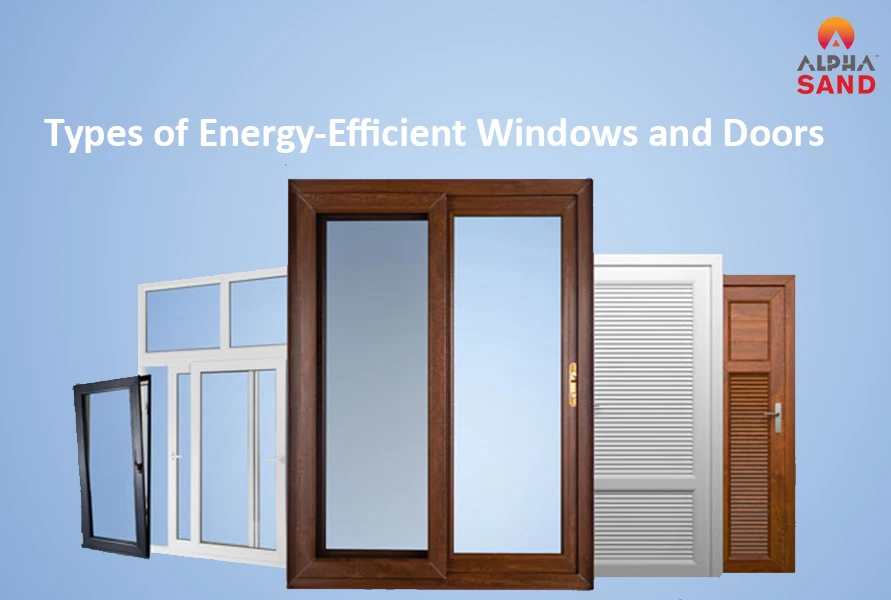
Windows and doors are important components of any building, serving both functional and aesthetic purposes. They enhance a structure's overall quality of life by providing natural light, ventilation, and visual access to the outdoors. In this write-up, we will explore the significance of windows and doors in building design, discussing their various functions and the considerations that go into selecting the right ones for a particular space.
Design Considerations:
Several factors must be considered when constructing a building’s windows and doors. The first step is to determine the purpose of the space. For example, the room should be welcoming and open if it is a living area.
If it is a private space, like a bathroom or bedroom, it should be less open and exposed. The location of doors and windows also plays a crucial role in determining spaces like a bathroom or bedroom; they should be less open and exposed. The location of the doors and windows also plays a crucial role in determining whether a space, like a bathroom or a bedroom, should be less open and exposed. The location of the doors and windows also plays an important role in determining a space’s overall aesthetic and functional quality. For instance, you may want to block traffic noise if you live near a major road.
Another important consideration is the pattern and orientation of the building. A building's walls are not just structural elements but also provide display and storage space. Before punching holes in windows and doors, it is essential to consider whether the walls can still perform these functions. Additionally, the type and size of door and window openings must be carefully chosen to ensure that they do not compromise the structural integrity of the building.
What are the Benefits of New Windows and Doors?

New windows and doors can significantly enhance a home's interior and exterior aesthetics. Modern window and door designs have practical features that make it easier to clean the hard-to-reach areas of the past. They can also improve the field of vision, making a space look more inviting and unique. Furthermore, new windows and doors can be designed to minimise air leakage and heat transfer, reducing energy costs by 7% to 15% per year.
What is Energy Efficiency in Windows and Doors?

Energy efficiency is a crucial aspect of modern window and door design. The primary goal of energy-efficient windows and doors is to reduce energy consumption and minimise the environmental impact of a building. This can be achieved through various features such as insulation, thermal barriers, and low-E coatings.
Benefits of Energy-Efficient Windows and Doors

Energy-efficient windows and doors offer numerous benefits to homeowners and the environment. Some of the key advantages include:
-
Lower Energy Bills: Energy-efficient windows and doors can significantly reduce energy consumption, leading to lower energy bills and cost savings over time.
-
Improved Comfort: Energy-efficient windows and doors can enhance a home's overall comfort by maintaining a consistent indoor temperature.
-
Environmental Benefits: By reducing the amount of energy required to heat or cool a building, energy-efficient windows and doors contribute to a more sustainable environment.
-
Increased Resale Value: Energy-efficient windows and doors can increase a home's resale value, making it more attractive to potential buyers.
-
Improved Indoor Air Quality: Energy-efficient windows and doors can help improve indoor air quality by reducing drafts and air leaks.
Types of Energy-Efficient Windows and Doors

There are several types of energy-efficient windows and doors available on the market. Some of the most common include:
-
Double-Glazed Windows: Double-glazed windows feature two panes of glass separated by a gap, reducing heat transfer and minimising energy loss.
-
Triple-Glazed Windows: Triple-glazed windows have three panes of glass, providing even better insulation and energy efficiency.
-
Low-E Coatings: Low-E coatings are thin layers of material applied to the glass that reduce heat transfer and minimise energy loss.
-
Thermal Barriers: Thermal barriers are materials placed between the glass panes to reduce heat transfer further and improve energy efficiency.
-
Fibrex Windows: Fibrex windows are made from a composite material that combines the benefits of wood and vinyl, offering improved insulation and energy efficiency.
Conclusion
Energy efficiency is a critical aspect of modern window and door design. By incorporating features such as insulation, thermal barriers, and low-E coatings, energy-efficient windows and doors can significantly reduce energy consumption and contribute to a more sustainable environment.